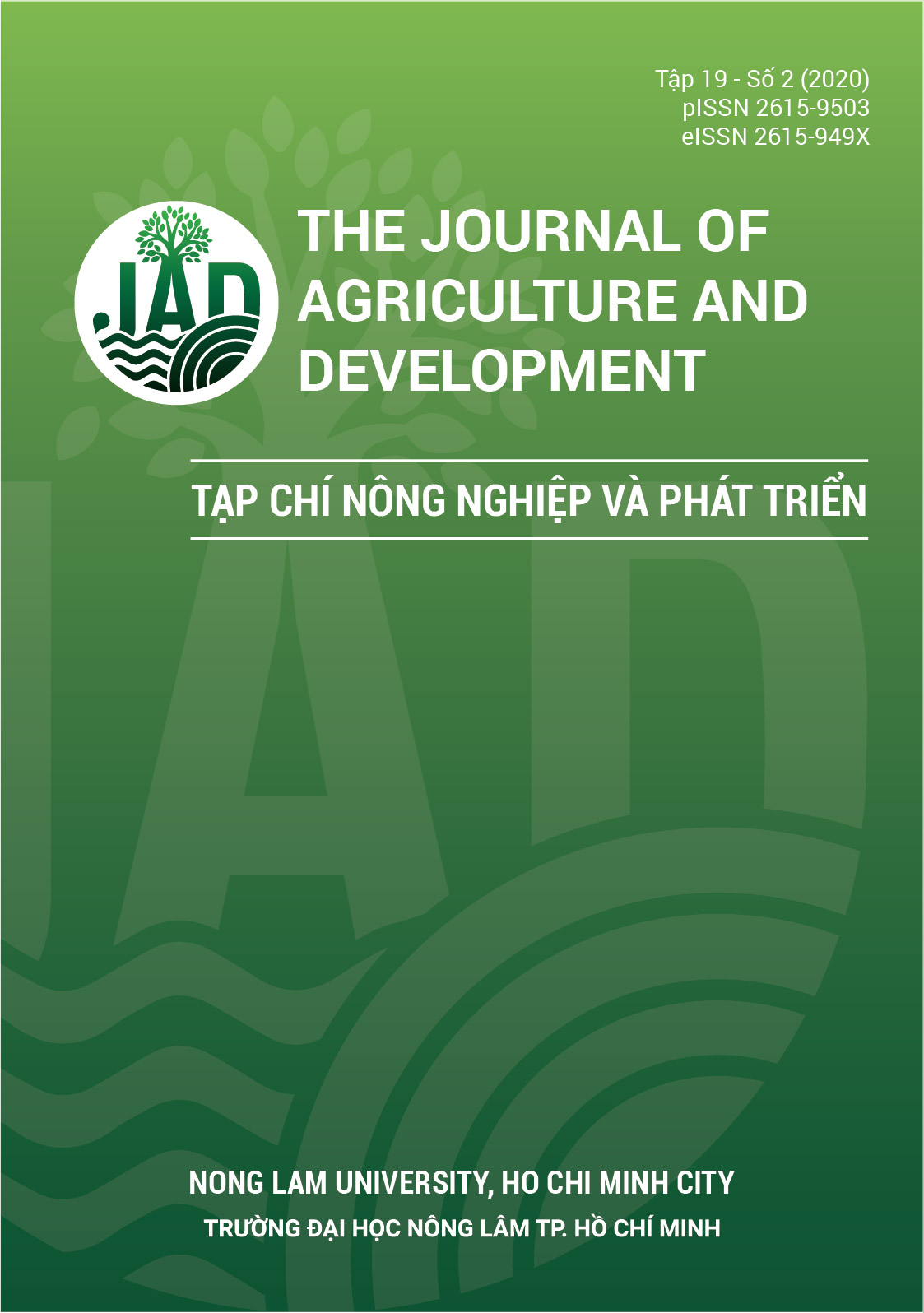Đánh giá khả năng thích ứng với biến đổi khí hậu cho nông nghiệp ở thành phố Hồ Chí Minh
Main Article Content
Tóm tắt
Trong bối cảnh nghiên cứu về các tác động của biến đổi khí hậu (BĐKH) nói chung và tác động đến nông nghiệp trên thế giới nói riêng ngày càng rõ nét, TPHCM đã có nhiều minh chứng về tác động của các hiện tượng thời tiết bất thường gây bất lợi rất lớn cho ngành nông nghiệp. Nghiên cứu sử dụng phương pháp điều tra xã hội học kết hợp với thang đo cảm nhận Likert, phương pháp phân tích nhân tố nhằm đánh giá khả năng thích ứng với BĐKH từ 4 nhân tố lần lượt là nhận thức về BĐKH, kinh nghiệm ứng phó với BĐKH, sự hỗ trợ của chính quyền và khả năng tiếp cận các nguồn hỗ trợ. Thông qua điểm số tính toán từ kết quả điều tra cộng đồng 10 quận/huyện có hoạt động nông nghiệp của Thành phố Hồ Chí Minh và các cơ quan quản lý giúp nghiên cứu xây dựng điểm số tổng hợp cho 4 tiêu chí và phân vùng không gian cho giá trị thích ứng BĐKH cho từng quận/huyện. Kết quả cho thấy, các quận huyện có khả năng thích ứng trung bình, cao tập trung ở các huyện Củ Chi, quận 9 và 12. Củ Chi được đánh giá có khả năng thích ứng cao nhất, với giá trị khả năng thích ứng tổng thể là 0,86. Quả thật, huyện Củ Chi được ghi nhận đồng thời có sự hỗ trợ từ chính quyền và khả năng tiếp cận các nguồn hỗ trợ cao nhất trong số 10 quận/huyện. Trong khi đó, Bình Chánh, Gò Vấp, Thủ Đức nằm trong khu vực có khả năng thích ứng thấp.
Article Details
Tài liệu tham khảo
ADB (Asean Development Bank). (2013). Vietnam: Environment and climate change assessment. Mandaluyong, Philippines: ADB.
ADB (Asean Development Bank). (2010). Ho Chi Minh City adaptation to climate change: summary report. Mandaluyong, Philippines: ADB.
Adger W. N. (1999). Social vulnerability to climate change and extremes in coastal Vietnam. World Development 27(2), 249-269. https://doi.org/10.1016/S0305-750X(98)00136-3
Balica, S. F., Wright, N. G., & van der Meulen, F. (2012). A flood vulnerability index for coastal cities and its use in assessing climate change impacts. Natural Hazards 64(1), 73-105. https://doi.org/10.1007/s11069-012-0234-1
Can, V. T., Nguyen, S. T., Tran, A. N., & Dang, K. D. (2013). Vulnerability assessment methods - Theory and practice. Part 2. Applying the calculation test for vulnerable indexes due to flood in Lam river basin - Nghe An province. VNU Journal of Science: Natural Sciences and Technology 29(2S), 223-232.
DONRE (Department of Natural Resources and Environment). (2010). Climate change adaptation and mitigation action plan report. Ho Chi Minh City, Vietnam: DONRE Office.
Downing, T. E., Butterfield, R., Cohen, S., Huq, S., Moss, R., Rahman, A., Sokona, Y., & Stephen, L. (2001). UNEP vulnerability indices: Climate change impacts and adaptation. UNEP policy series. Nairobi, Kenya: UNEP.
Fellmann, T. (2012). The assessment of climate changerelated vulnerability in the agricultural sector: reviewing conceptual frameworks. In Meybeck, S., Lankoski, J., Redfern, S., Azzu, N., & Gitz, V. (Eds.) Building resilience for adaptation to climate change in the agriculture sector (37-61). Rome, Italia: FAO and OECD. https://doi.org/10.13140/2.1.4314.8809
GSO (General Statistical Office). (2016). Vietnam population forecast 2014 - 2049. Ha Noi, Vietnam: Statistical Publisher.
Hair, J. F., Black, B., Babin, B., Anderson, R. E., & Tatham, R. L. (2006). Multivariate data analysis (6th ed.). London, UK: Pearson Prentice Hall.
IPCC (The Intergovernmental Panel on Climate Change). (2014). Climate change 2014: impacts, adaptation, and vulnerability. Part A: Global and sectoral aspects. Contribution of working group II to the fifth assessment report of the intergovernmental panel on climate change. New York, USA: Cambridge University Press.
Kumar, P., Geneletti, D., & Nagendra, H. (2016). Spatial assessment of climate change vulnerability at city scale: A study in Bangalore, India. Land Use Policy 58, 514-532. https://doi.org/10.1016/j.landusepol.2016.08.018
MONRE (Ministry of Natural Resources and Environment). (2016). Climate change and sea level rise scenarios for Viet Nam. Ha Noi, Vietnam: Vietnam Natural Resources and Environment Publishing House.
Saaty, T. L. (1988). What is the analytic hierarchy process? In Mitra, G. (Ed.). Mathematical models for decision support (109-121). Berlin, Germany: Springer.
Swanson, D., Hiley, J., Venema, H., & Grosshams, R. (2007). Indicators of adaptive capacity to climate change for agriculture in the Prairie region of Canada: An analysis based on statistics Canada’s census of agriculture. Working Paper for the Prairie Climate Resilience Project. Winnipeg, Manitoba: International Institute for Sustainable Development.
Tri, V. P. D., Trung, N. H., & Thanh, V. Q. (2013). Vulnerability to flood in the Vietnamese Mekong delta: Mapping and uncertainty assessment. Journal of Environmental Science and Engineering B(2), 229-237.
UNDP (United Nations Development Programme). (2006). Human development report 2006 beyond scarcity: Power, poverty and the global water crisis. New York, USA: Palgrave Macmillan.
Yamane, T. (1967). Statistics: An introductory analysis (2nd ed.). New York, USA: Harper & Row.








